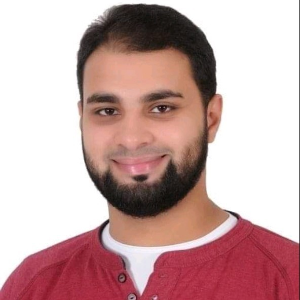Title : Measurement of lumbar spine movements from different planes of motion in women after exposure to cesarean delivery using several types of anaesthesia
Abstract:
Background: Pregnancy is involved in different lumbar spine changes including increased ligamentous laxity, increased lumbar lordosis, and increased mechanical stress on the facet joints due to the associated postural changes. By the end of puerperium, these changes are anticipated to return to the prepregnant status. This study assessed the pain-free active lumbar spine range of motion (ROM) from different planes of motion (Sagittal plane: flexion and extension, Frontal plane: right and left side bending, and Transverse plane: right and left axial rotation) in women who were exposed to cesarean delivery (CD) using several types of anaesthesia. The measurements were taken at 6-12 weeks postpartum to make sure that they finished their puerperium according to the illustrated WHO definition. Then the study compared these measurements with those of the control group who were without previous pregnancy or anaesthesia.
Method: This historical (retrospective) cohort study included 63 participants. Their ages were from 18 to 35-years-old. They were classified into 4 groups. Group A: 9 women who had CD using epidural anaesthesia, Group B: 22 women who had CD using spinal anaesthesia, Group C: 10 women who had CD using general anaesthesia, and Group D: 22 women who represented the control group. The women in the three cesarean groups were either primiparous or multiparous who did not experience any type of anaesthesia for at least one year from the last delivery. We excluded women who experienced vaginal delivery, women who did not continue all assessment procedures, and women who experienced previous specific low back dysfunctions such as those who were diagnosed with lumbar disc prolapse, spondylolisthesis, scoliosis, and true or apparent leg length discrepancy more than one cm.
Results: All of the measured pain-free active lumbar spine range of motion showed a statistical non-significant difference among the four groups, except that of the active lumbar spine extension ROM. Despite there was a significant decrease in the mean of the active lumbar spine extension ROM among women of the three CD groups when compared to the controls, there was non-significant difference among the three CD groups regardless the type of anaesthesia.
Conclusion: By the end of puerperium, women who were exposed to CD using epidural, spinal, and general anaesthesia restored their physiological movements of the lumbar spine in all planes of motion, except that of extension. The decreased active lumbar extension ROM may be attributed to the restricted impact of the CD abdominal scar. Physical Therapists should be aware by the decreased active lumbar extension ROM after CD. further studies may be necessary to examine the possible causes for this decrease and the affordable approaches to target it.
Audience Take Away:
- By the end of puerperium after cesarean delivery, all lumbar spine ROM returns to its prepregnant measures except in Extension ROM.
- The type of anaesthesia may have no effect on the lumbar spine ROM after cesarean delivery
- This research opens the door for investigating the risk factors or causes of restricted Extension ROM
- This presentation draws the attention of Physical Therapists for women health to the restricted lumbar Extension ROM, which may be a risk factor to postpartum low back pain
- By identifying the restricted lumbar Extension ROM, the Physical Therapists can design different approaches to regain this restricted lumbar movement




